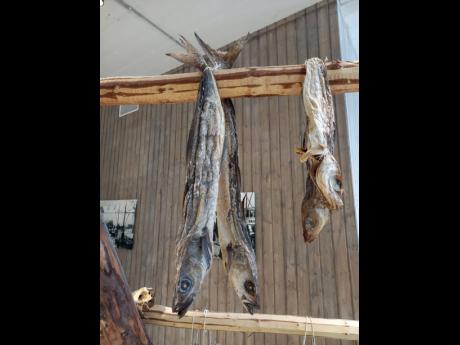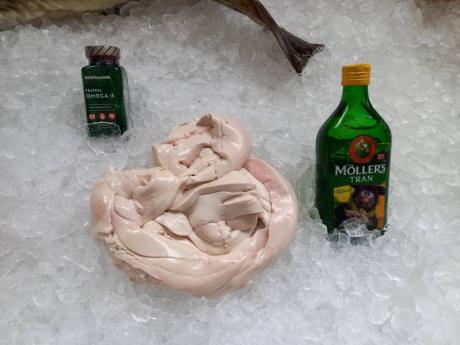From the sea to Jamaican tables - Norwegians show how they prepare salt fish
Regardless of one's age, one of the mysterious things about salt fish, which forms one half of Jamaica's national dish, is the lack of knowledge about the head, which, it has been said, bares a strong resemblance to that of a human.
I eagerly anticipated the chance to see if the myth was correct. But once I got the chance to view the head, I realise that what I have been hearing over the years was not true. The reality is, the head of the salt fish looks just like that of a regular fish - a slender head, with pointed mouth and large eyes.
On Wednesday, as a part of the Norwegian Seafood Company (NSC) press tour in the European country, I had the privilege of touring Nordvagen Seafood Aksjeselskap (AS), a seafood company that exports salt fish to Jamaica. The company had salt fish in various stages of the drying process on display, so I was able to view the dried head of a salt fish, alongside what it looks like when freshly caught.
Dried, the salt fish has narrow short fins, a long and slender body, and looked almost ghost-like, which for me was unsettling. However, in the eyes of Leif Nylund, manager of Nordvagen Seafood AS, it was a "beautiful fish", even in its dried form. While there, I was also informed that there are two types of what the Norwegians called salted fish; these are Saithe and Ling. The Ling is mainly exported to countries like the Dominican Republic and Mexico, while Saithe is solely exported to Jamaica because, according to Nylund, Jamaicans have always preferred the Saithe over the Ling.
"Although the fishes are similar, it's really because of the culture. Jamaicans have always preferred the flavour of the Saithe," explained Nylund. In explaining the reason we are not seeing the head of the salt fish that comes to Jamaica, Orjan Olsen, NSC head of emerging markets, told THE WEEKEND STAR that compared to other fishes, the cod, which have bigger heads, are dried then sold, but the Saith is smaller and has less flesh on it.
While at Nordvagen, I was able to view the codfish's liver, which is used to make cod liver oil, a supplement taken by many Jamaicans. This is a light pink organ, which for me was disturbing to see, causing me to wonder if I will ever take one of those tablets again. However, the thought quickly disappeared after remembering the many benefits of the supplement, such as reducing cholesterol, alongside its ability to keep my nervous system healthy.








































